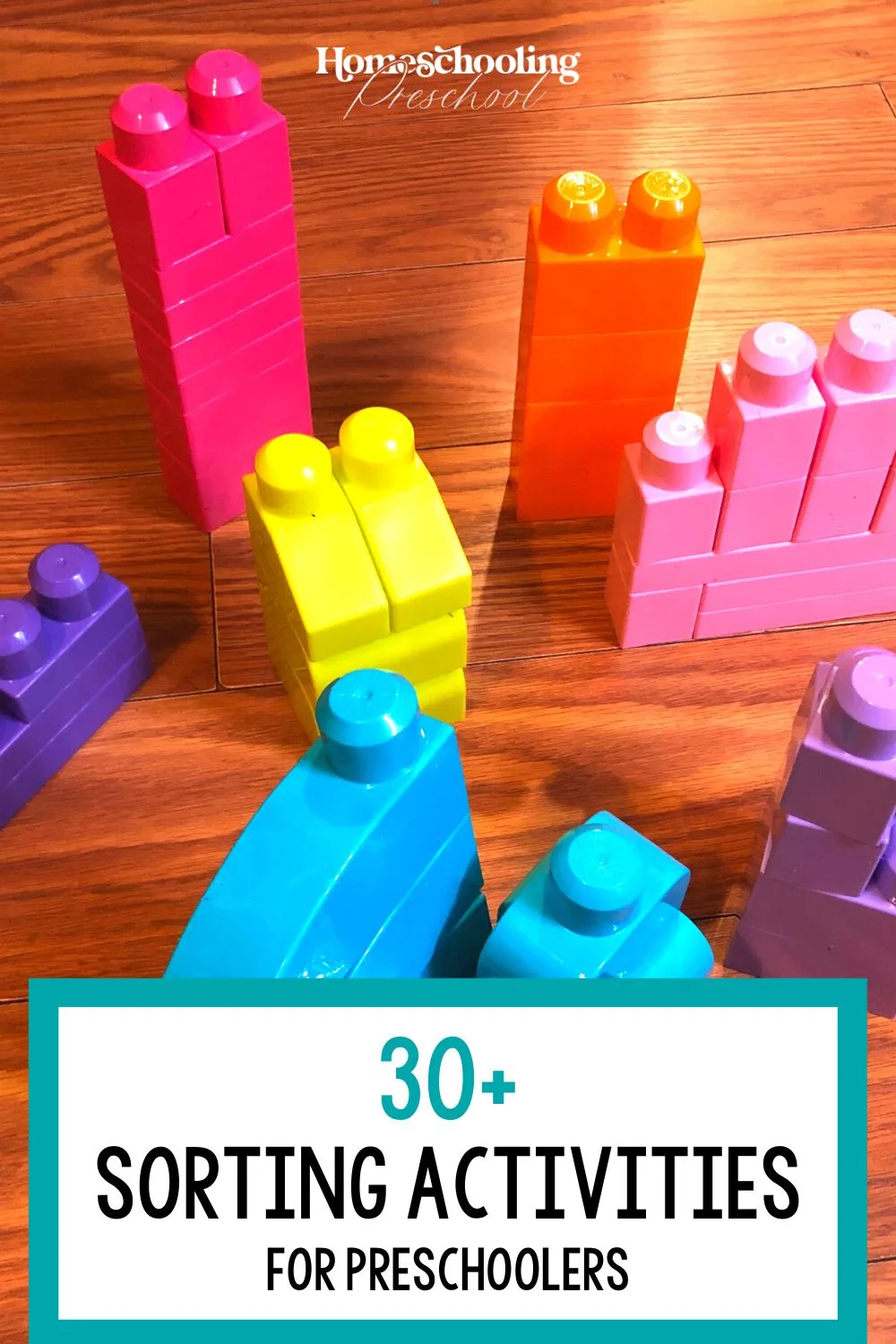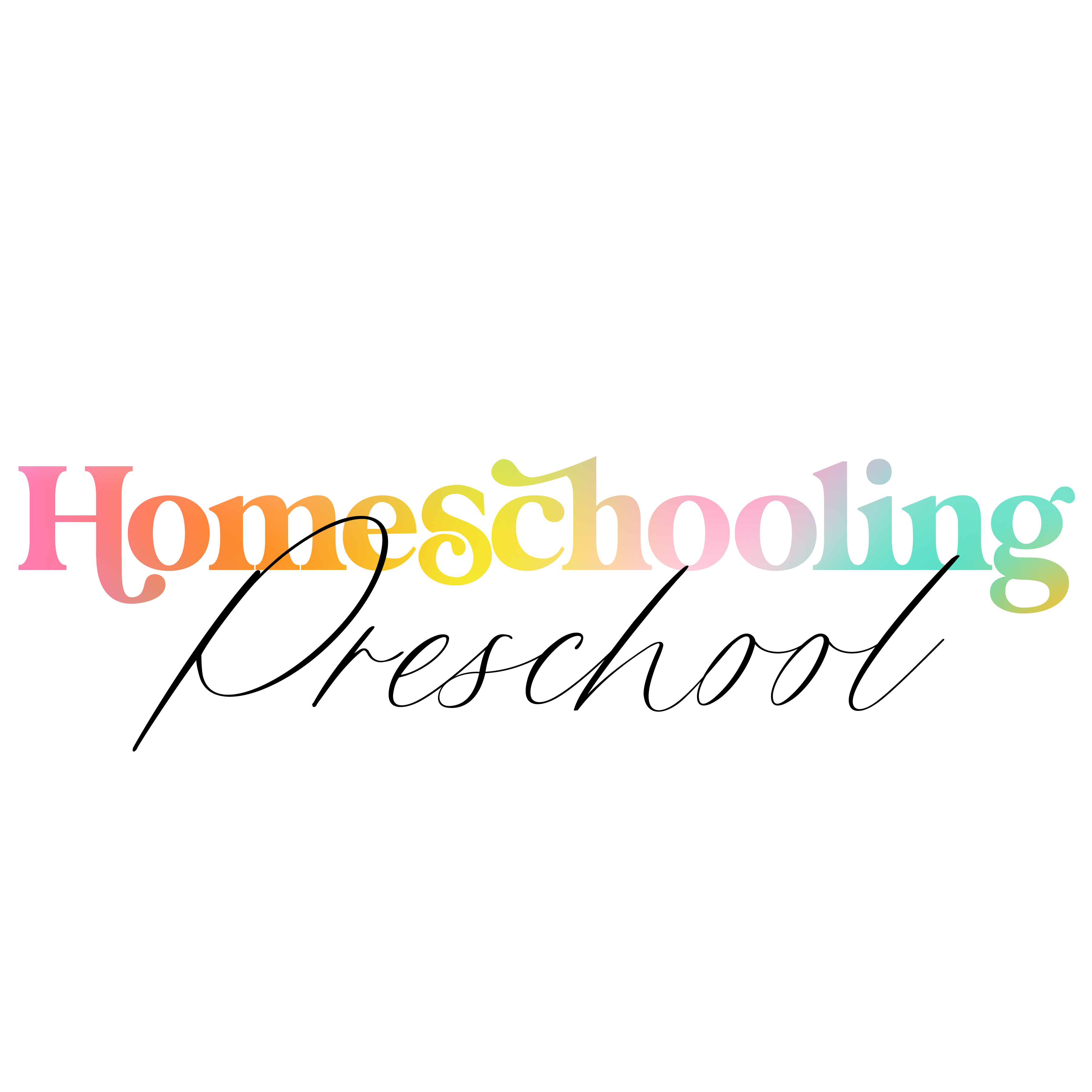Breathe new life into sorting activities with these fun new ideas. You use what you have on hand, which makes these activities even better!

Why Preschoolers Need to Practice Sorting
There are many incredible benefits to doing sorting activities with your preschooler.
To start, reasoning and decision-making skills are practiced each time a preschooler decides what pile to put the item in.
Repetition is critical to making these skills stronger.
Many times, the items that are used in sorting activities are awkwardly shaped or sized.
Fine motor skills are being put to work with these tasks.
Naturally, if the preschooler is sorting by color, then colors are being reinforced.
The same applies to shapes, number of sides, etc.
Whatever the categories are, they are being reinforced.
All these skills (and more!) are building a foundation of mathematical knowledge.
Simple sorting activities pack a punch when it comes to brain development and growth.

This article may contain affiliate links to products that may help you when homeschooling preschool.
The Best Preschool Sorting Activities
1. Sort different colored objects into piles
One of the simplest forms of sorting activities is sorting by colors. The more colors given, the harder the activity becomes.
2. Sort objects by size (big and small)
3. Sort objects by shape (circle, square, triangle)
Starting with two or three shapes is critical to helping your little one become familiar with the shapes.
4. Sort objects by texture (smooth and rough)
5. Sort objects by weight (heavy and light)
For more advanced preschoolers, think about including two items that look the same but are different weights.
A balloon filled with dry beans (or water) will be heavier than one filled with air.
The same can be done with empty jars or containers.

6. Sort objects by temperature (hot and cold)
7. Sort objects by sound (loud and soft)
When choosing items for this, think about how you want your preschooler to test the sound by hitting it with a spoon or dropping it on the floor.
This may change what items you choose to include.
8. Sort objects by taste (sweet and salty)
You know your kid best. Think about foods you know she likes.
To have the best success, choose foods she is already familiar with unless you have an adventurous eater.
9. Sort objects by smell (pleasant and unpleasant)
This sorting activity may require some preplanning to find suitable unpleasant smells. 😉
10. Sort objects by length (long and short)

11. Sort objects by width (wide and narrow)
This is the perfect time to introduce new vocabulary words to your preschooler.
Wide and narrow are great additions.
Try having your little one say wide and narrow as she sorts so she reinforces the use of the words.
12. Sort objects by height (short and tall)
When preschoolers compare items, they often omit that the ends of the items must be equal.
Encourage your preschooler to stand the items on the floor or table to keep the bottom ends equal.
13. Sort objects by thickness (thick and thin)
14. Sort objects by quantity (many and few)
There are a few different ways to do this sorting activity.
Give your little one some chocolate chip cookies and have her sort the ones that have many chocolate chips and the ones that have few chocolate chips.
Another way is to give her some of the same items.
The items that there are many of would go in one pile (like ten erasers or eight pencils ), and the items that there are few of would go in another pile (like two paper clips or one glue stick).
15. Sort objects by function (things we eat, things we wear, things we play with, etc)
Changing the number of categories is a great way to make these sorting activities grow with your little one’s abilities.
Having different unrelated categories makes your little one think about and reason more about what category each item will go in.

16. Sort objects by category (animals, plants, vehicles, etc.)
17. Sort objects by letter (objects that start with different letters of the alphabet)
Write the letters of the alphabet on sticky notes and put them along the wall near the ground (or on the table) to help your little one sort the items.
18. Sort objects by number (objects with different number of items)
The number of legs on an animal or wheels on a car are great places to start with this sorting activity.
19. Sort objects by pattern (striped, polka-dot, solid, etc.)
20. Sort objects by time (morning, afternoon, evening)
Create pictures or gather items of different things you do during each time slot.
Something general like eating could go in any of the slots.
Decide if you want to have one so your little one explains her reason, or make it more specific by saying breakfast.

21. Sort objects by season (objects associated with different seasons)
22. Sort objects by weather (objects associated with different weather conditions)
23. Sort objects by color and shape (red circles, blue squares, etc.)
The double specifications of this sorting activity make it challenging.
It’s an excellent opportunity to see how good your little one’s reasoning and sorting skills are.
24. Sort pictures of animals into groups based on their habitats
Before doing this activity, you will need to discuss what habitats are.
25. Sort pictures of fruits and vegetables into groups based on their colors

26. Sort pictures of vehicles groups based on their modes of transportation (land, air, water)
27. Sort pictures of clothing based on the weather they are worn in
28. Sort pictures of food into groups based on their food groups (fruit, vegetables, grains, etc.)
Kids are never too young to learn about food as fuel and nutrition.
29. Sort pictures of objects based on their materials (wood, plastic, metals, etc.)
30. Sort pictures of plants into groups based on their types (trees, flowers, grasses, etc.)
31. Sort pictures of shapes into groups based on the number of sizes they have

Different Ways to Practice Sorting
Dig down to the bottom of the toy box to find some forgotten toys. Then choose a few of the sorting activities ideas above and let your little one grow her brain.
